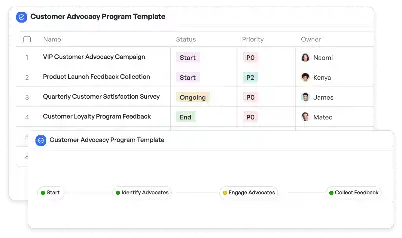Edge Computing Cost Allocation Model Template
Achieve project success with the Edge Computing Cost Allocation Model Template today!

What is Edge Computing Cost Allocation Model Template?
The Edge Computing Cost Allocation Model Template is a specialized framework designed to help organizations effectively allocate costs associated with edge computing resources. Edge computing, which involves processing data closer to its source rather than relying on centralized cloud systems, has become increasingly vital in industries such as IoT, healthcare, and smart cities. This template provides a structured approach to identify, categorize, and allocate costs for edge computing infrastructure, including hardware, software, and network resources. By using this model, businesses can ensure transparency in cost distribution, optimize resource utilization, and make informed financial decisions. For example, in a smart city scenario, the template can help allocate costs for edge servers deployed across various locations to support real-time data processing for traffic management and public safety.
Try this template now
Who is this Edge Computing Cost Allocation Model Template Template for?
This template is ideal for IT managers, financial analysts, and project managers working in industries that rely heavily on edge computing. Typical roles include IoT solution architects who need to allocate costs for edge devices, network engineers managing bandwidth expenses, and financial planners ensuring cost efficiency in edge deployments. For instance, a healthcare IT manager can use this template to allocate costs for edge servers processing patient data in real-time, while a smart city planner can apply it to budget for edge computing resources used in traffic monitoring systems.

Try this template now
Why use this Edge Computing Cost Allocation Model Template?
Edge computing introduces unique challenges in cost management due to its decentralized nature. Without a structured approach, organizations may face issues such as overspending on underutilized resources or failing to account for hidden costs like maintenance and energy consumption. The Edge Computing Cost Allocation Model Template addresses these pain points by providing a clear framework for cost categorization and allocation. For example, it helps identify the costs associated with deploying edge servers in remote locations, calculate bandwidth expenses for real-time data processing, and optimize energy usage for edge devices. By using this template, businesses can achieve cost transparency, improve budgeting accuracy, and ensure the sustainability of their edge computing initiatives.

Try this template now
Get Started with the Edge Computing Cost Allocation Model Template
Follow these simple steps to get started with Meegle templates:
1. Click 'Get this Free Template Now' to sign up for Meegle.
2. After signing up, you will be redirected to the Edge Computing Cost Allocation Model Template. Click 'Use this Template' to create a version of this template in your workspace.
3. Customize the workflow and fields of the template to suit your specific needs.
4. Start using the template and experience the full potential of Meegle!
Try this template now
Free forever for teams up to 20!
The world’s #1 visualized project management tool
Powered by the next gen visual workflow engine




